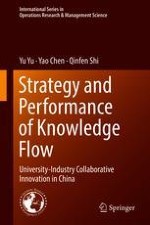This book constructs a model of the knowledge value chain in the university and analyzes the university knowledge value-added mechanism in the process of Industry-University Collaborative Innovation. The efficiency of university knowledge value-added of Provinces in China is measured. The book illustrates the operating mechanism between enterprise subsystems and college subsystems in the collaborative innovation system, and establishes a Data Envelopment Analysis (DEA) model with parallel decision making units to assess the performance of Industry-University Collaboration Innovation in China by considering the complex internal structure of the collaborative innovation system. The book also addresses various behaviors of knowledge agents in the knowledge sharing process.
The research findings of this book will provide some policy implications to help policy makers to establish a more effective collaborative and interactive innovation system. The focus on China offers a unique contribution, because the form that university-industry collaborations take differs widely from country to country. The United States, the United Kingdom, Japan, and China differ vastly in the way that they implement their respective R&D policies. Some of these differences stem from national culture, others from the historical evolution of the institutions that support innovation efforts, and some from the extent of available resources.
